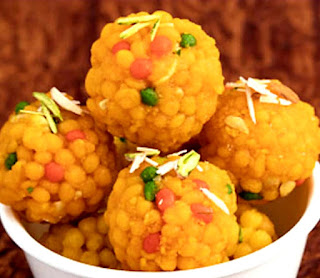"FOOD FOOD JUNCTION"
 |
| Goddes Laxmi Mata. |
Kojagari Laxmi Puja Significance and Rituals 2023.
Author : Rana Sharma.
Kojagori Laxmi Puja, otherwise called Kojagari Lakshmi (in the year 2023, Kojagari Laxmi Puja 2023 date & time is 28 October 2023 from 10:55 PM to 11:46 PM. The duration will be 50 minutes and Purnima tithi will begin from 4:17 AM on 28 October and end at 01:53 AM on 29 October 2023) Vrat or Sharad Purnima, is a Hindu celebration and vrat (fasting) saw in different pieces of India, especially in West Bengal, Odisha, and a few other eastern districts. It is devoted to Goddess Lakshmi, the Hindu goddess of riches, success, and prosperity. The celebration regularly falls on the full moon night in the Hindu lunar month of Ashwin, which ordinarily happens in October.
Here
are a few vital parts of Kojagori Laxmi Puja:
Date:
The celebration is seen the evening of the full moon in the long stretch of
Ashwin, which is viewed as a favorable chance to revere Goddess Lakshmi.
Love
of Goddess Lakshmi: On this day, individuals offer supplications and perform
different ceremonies to Goddess Lakshmi to look for her gifts for success,
riches, and prosperity. Exceptional Laxmi Puja is directed during the evening,
normally after the full moon rises.
Fasting
and Vigil: Aficionados quick during the day, keeping away from drinking food
and water until the Laxmi Puja is performed around evening time. They likewise
stay conscious around evening time, directing a vigil or keeping alert to love
the goddess.
Laxmi
Panchali: The Laxmi Panchali, a hallowed text committed to Goddess Lakshmi, is
recounted during the puja to summon her favors. Aficionados sing psalms and
bhajans (reflection melodies) devoted to the goddess.
Beautifications:
Homes and puja spaces are perfectly brightened with vivid rangoli, diyas (oil
lights), and blossoms. It is accepted that Goddess Lakshmi visits homes that
are perfect and flawlessly embellished.
Contributions:
Contributions to the goddess incorporate desserts, natural products, coconut,
betel leaves, betel nuts, and different things thought about dear to Goddess
Lakshmi. Silver and gold coins or gems are likewise frequently utilized as
contributions.
Perception
in West Bengal: In West Bengal, particularly in Kolkata, Kojagari Laxmi Puja is
a significant celebration, and it is commended with extraordinary excitement
and dedication. Families and networks meet up to play out the puja.
Recognition
in Different Locales: While Kojagari Laxmi Puja is most famous in West Bengal,
comparable observances of Lakshmi Puja can be tracked down in different
districts of India, for certain varieties in customs and ceremonies.
The
celebration is a period for families to meet up, look for the endowments of
Goddess Lakshmi, and commend thriving and overflow. It is accepted that on this
promising evening, Goddess Lakshmi meanders the Earth to favor the people who
are faithful and earnest in their love.
Kojagari
Laxmi Puja is customarily performed on the full moon day (Purnima) in the Hindu
month of Ashwin, which falls during October-November in the Gregorian schedule.
Purnima, or the full moon day, is viewed as profoundly propitious in Hinduism,
and it holds exceptional importance in the love of Goddess Lakshmi.
During
Kojagari Laxmi Puja, lovers notice a quick during the day and love Goddess
Lakshmi with commitment and devotion during the evening, for the most part
after the moon rises. The customs are performed to look for the gifts of
Goddess Lakshmi, the goddess of abundance and thriving.
It's
critical to take note of that the specific date of Kojagari Laxmi Puja might
change every year founded on the lunar schedule. Aficionados generally counsel
Hindu schedules or ministers to decide the particular date of Purnima in the
period of Ashwin and play out the puja as needs be. The celebration is
commended with extraordinary intensity, and families meet up to offer petitions
and look for the favors of Goddess Lakshmi for riches and prosperity.
Significance and Rituals of Laxmi Puja:
Lakshmi
Puja, otherwise called Diwali Puja or Deepavali Puja, is a critical Hindu
strict custom and celebration saw to venerate Goddess Lakshmi, the goddess of
riches, success, and favorable luck. It is normally commended during the
celebration of Diwali, which is perhaps of the most significant and broadly
noticed celebration in Hinduism. Here are the importance and key customs
related with Lakshmi Puja:
Importance:
Love
of Riches: Goddess Lakshmi is viewed as the bestower of abundance and
flourishing. Hindus accept that her gifts carry monetary security and overflow
to their homes and resides. Subsequently, Lakshmi Puja is performed to look for
her gifts for a prosperous future.
Diwali
Festivity: Lakshmi Puja is a basic piece of the bigger Diwali celebration.
Diwali connotes the triumph of light over obscurity and great over evil, and
the presence of Goddess Lakshmi is viewed as an epitome of heavenly favors
during this merry time.
Key
Customs:
Cleaning
and Enlivening Homes: Before the puja, individuals clean and enrich their
homes, as it is accepted that Goddess Lakshmi favors perfect and all around
adorned places. Rangoli (beautiful floor plans) and oil lights or diyas are
utilized for enrichments.
Lakshmi
Pujan: The fundamental custom includes the real love of Goddess Lakshmi. Fans
introduce a mud or metal icon or picture of the goddess on a special raised
area and perform different ceremonies, including:
Ganesh
Puja: It starts with the love of Master Ganesha, the remover of deterrents, who
is accepted to prepare for the smooth section of Goddess Lakshmi into the home.
Lakshmi
Avahan: This includes welcoming Goddess Lakshmi to sit down in the home or spot
of love. Mantras and petitions to heaven are recounted during this stage.
Contributions:
Enthusiasts offer different things to the goddess, including blossoms, natural
products, desserts, coconut, betel leaves, betel nuts, and different things
considered favorable.
Aarti:
An aarti (stately waving of lights) is performed to the goddess. Enthusiasts
sing reflection melodies and songs devoted to Goddess Lakshmi.
Lakshmi
Homa: In certain practices, a homa (fire custom) is led with explicit
contributions to summon the goddess' endowments.
Lighting
Lights: Lighting oil lights or diyas is a fundamental piece of the puja. It represents
the expulsion of obscurity and the victory of light, both in a real sense and
metaphorically.
Disseminating
Prasad: After the puja, lovers disperse the favored prasad (blessed food or
desserts) to relatives and visitors.
Trading
Gifts: Trading gifts and desserts with loved ones as an image of generosity and
affection is standard.
Saltines
and Firecrackers: In certain districts, Diwali festivities incorporate the
lighting of fireworks and firecrackers as an approach to commending the triumph
of light and the loss of haziness.
Family
and Local meetings: Lakshmi Puja is regularly celebrated with family and now
and again with bigger local meetings. It is a period for individuals to meet
up, look for the goddess' favors, and commend the celebration.
Lakshmi
Puja is a period for reflection, appreciation, and looking for the gifts of
Goddess Lakshmi for thriving and prosperity. The customs might change in
various districts and networks, yet the focal subject of summoning riches,
overflow, and thriving remaining parts predictable.
Bhogs and Sweets of Laxmi Puja:
Bhog
and sweets play a significant role in the celebration of Lakshmi Puja, as
offerings to Goddess Lakshmi and as part of the festivities during the Diwali
festival. Here are some common bhogs (offerings) and sweets associated with
Lakshmi Puja:
1.
Bhogs (Offerings):
Rice: Rice is an
essential offering during Lakshmi Puja. It is often offered as a symbol of
sustenance and abundance.
Fruits: Fresh fruits, such as bananas,
apples, pomegranates, and coconuts, are commonly offered to Goddess Lakshmi.
Flowers: Fresh flowers,
particularly marigold and lotus flowers, are used as offerings and decorations.
They are considered auspicious and fragrant offerings.
Betel Leaves and Betel Nuts: Betel leaves
and betel nuts are often offered as a symbol of hospitality and respect.
2.
Sweets for Lakshmi Puja:
Ladoo: Ladoo is a round, sweet delicacy
made from ingredients like flour, sugar, and ghee. It's one of the most common
sweets offered during Lakshmi Puja.
Barfi: Barfi is a sweet made from
condensed milk, sugar, and flavorings such as cardamom or coconut. It is often
cut into square or diamond shapes.
Kheer: Kheer is a rice pudding made
with milk, sugar, and flavored with cardamom and sometimes saffron. It is a
creamy and comforting sweet dish.
Jalebi: Jalebi is a deep-fried
pretzel-shaped sweet made from a fermented batter and soaked in sugar syrup. It
is crispy on the outside and syrupy inside.
Rasgulla: Rasgulla is a
popular Bengali sweet made from cottage cheese or chhena balls soaked in sugar
syrup. It is soft, spongy, and delicious.
Gulab Jamun: Gulab Jamun is
a deep-fried doughnut-like sweet made from milk solids and soaked in sugar
syrup. It is a favorite sweet during festive occasions.
Sandesh: Sandesh is a
Bengali sweet made from fresh paneer (chhena) and flavored with cardamom or
saffron. It's often shaped into small, sweetmeat-like pieces.
Modak: Modak is a sweet dumpling
commonly associated with Lord Ganesha but is also offered to Goddess Lakshmi.
It is made from rice flour or wheat flour and filled with sweet fillings like
coconut and jaggery.
Coconut Ladoo: These are sweet
coconut balls made with grated coconut, sugar, and sometimes cardamom. They are
easy to prepare and offer a delightful coconut flavor.
These sweets are not only offered to Goddess Lakshmi during the puja but are also shared with family members and guests as prasad (consecrated food) as a symbol of sharing blessings and happiness. The specific sweets prepared and offered may vary by region and personal preferences, but they all add to the festive spirit and culinary delight of Diwali and Lakshmi Puja.
🙏 “May the divine light of Goddess Lakshmi illuminate our lives and remove all darkness.” 🙏
Thanking You
Yours Foodie Friend
Rana.










.jpeg)







.jpeg)
0 Comments